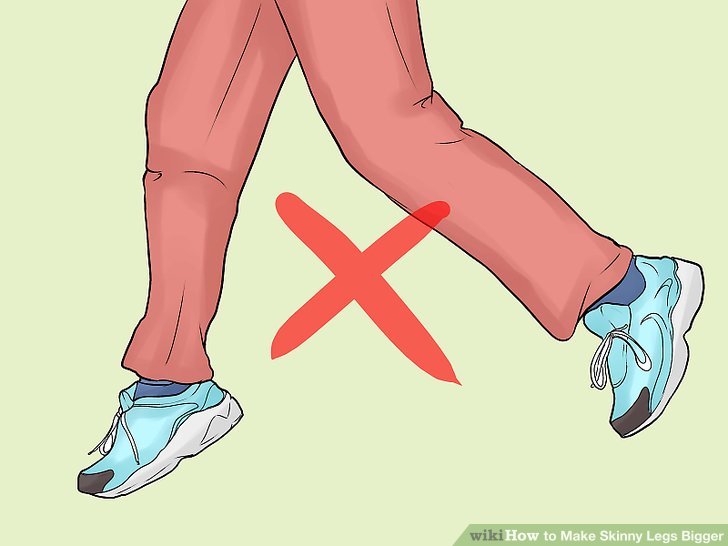Why my legs won’t get bigger? Calories are the building blocks of the body, without them, tissue growth couldn’t happen. If you’re not in a calorie surplus, meaning, you’re not eating more calories than you burn in a day, it is scientifically impossible for you to gain new tissue, i.e. muscle. This goes for all muscle too, not just legs!
First, What muscle makes your legs look bigger? Quads. The “quads” are the muscles at the front of the upper leg (thigh). These include the rectus femoris, vastus lateralis, and vastus intermedius. Bulk out those quads with squats of any type.
How fast do legs grow? The typical minimum period for studies meant to measure strength, hypertrophy and other muscle adaptations at clinically significant levels is eight weeks, or two months. And as ExRx.net explains, the average person can expect to build about 3 pounds of muscle after two months of consistent strength training.
Second, How can I gain weight in my legs and bum? To build up more muscle tissue in your thighs and buttocks, you need to consume more quality calories. Get rid of processed food, refined grain products, fatty meats and fast food. Instead, feed your body with fruits, vegetables, lean meats, fish, whole grains, seeds, foods high in fiber, and low-fat dairy products.
Are legs easy to build? Leg muscles can be tough to build up, because they’re already so strong from daily use. To get bigger leg muscles you have to take your training to the next level and push your legs like never before. Using the right training techniques and eating plenty of protein will pay off in the end.
How can I make my legs thicker without exercise?
Eat foods that help to build muscle. Add beets, salmon, mackerel, sardines, greek yogurt, almonds, chocolate milk, avocado, lentils, raspberries, quinoa, broccoli, eggs, olive oil and beef to your diet.
Can you add fat to your legs?
Fat grafting has revolutionized how doctors can improve the contour of calves and thighs and correct other soft tissue issues on the legs. Structural fat grafting involves the harvesting of fat from various areas on your body. That fat is then injected into your legs to create your desired effect.
What food makes your thighs thicker?
High in fat and sugar, a typical serving of a food like French fries or cake contains way more calories than a serving of a healthier food, such as fruit or lean meat. It’s easy to go over your calorie needs for the day when you eat junk food often, and it can quickly lead to fatter thighs.
How can I get fat legs without exercise?
Eat foods that help to build muscle. Add beets, salmon, mackerel, sardines, greek yogurt, almonds, chocolate milk, avocado, lentils, raspberries, quinoa, broccoli, eggs, olive oil and beef to your diet.
How do you get big legs fast?
But follow these guidelines, and I promise that your legs and body will change.
- Squat every day.
- Get great at goblet squats.
- Build up strength with Bulgarians.
- Finish with 10 minutes of lunges or stepups.
- Deadlift heavy at least once a week.
- Pay attention to your glutes.
How long does it take to get thick legs?
Tip. You’ll see differences in your legs two to four weeks after starting your leg workouts. But give it at least four months for the big gains.
How long does it take to grow legs?
The typical minimum period for studies meant to measure strength, hypertrophy and other muscle adaptations at clinically significant levels is eight weeks, or two months. And as ExRx.net explains, the average person can expect to build about 3 pounds of muscle after two months of consistent strength training.
How can I gain weight in my thighs and hips?
Exercise to Build Muscle
Your exercise routine should include resistance training for your glutes, thighs and hips. In addition to squats and deadlifts, ACE recommends including the following exercises for the perfect butt: Hip bridges with abduction. Clam shells.
Why are my legs not growing?
Calories are the building blocks of the body, without them, tissue growth couldn’t happen. If you’re not in a calorie surplus, meaning, you’re not eating more calories than you burn in a day, it is scientifically impossible for you to gain new tissue, i.e. muscle. This goes for all muscle too, not just legs!






